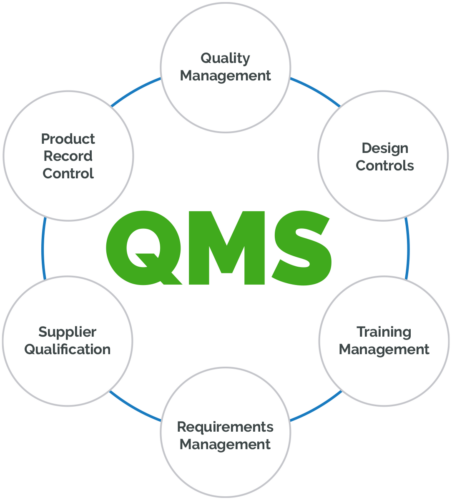Explore strategies for effective QMS adoption using Agile and Lean principles. Discover how to streamline quality management without slowing down innovation.
Introduction: Reinventing Quality Management in a Fast-Moving World
Let me guess—you’ve been handed the task of implementing or improving a Quality Management System (QMS), and you’re already bracing for pushback. Maybe you’ve heard the usual: “It’s too rigid,” “It slows us down,” or the classic, “We don’t have time for all that documentation.”
I’ve been there.
The reality is, traditional QMS frameworks weren’t exactly built for speed. They came from industries where control and predictability were king—think manufacturing floors, not software sprints. But today’s IT and tech-driven companies? We live and breathe adaptability. So how do you adopt a QMS that supports quality without killing agility?
Simple: you bring Agile and Lean thinking into the process.
In this post, we’ll explore strategies for effective QMS adoption using Agile and Lean principles—proven approaches that align with today’s fast-paced environments while still keeping quality front and center.
1. Ditch the Big-Bang Rollout: Start Small, Scale Fast
One of the biggest mistakes in QMS adoption? Trying to implement everything at once. Full-blown policies, complex documentation, audits—all dropped in overnight like a surprise system update no one asked for.
Agile thinking flips this.
Instead of a big-bang launch, start with a Minimum Viable QMS (MVQMS)—just enough structure to begin improving quality without overwhelming the team. Then build iteratively. Pilot your QMS processes with one department or project, gather feedback, adjust, and expand gradually.
This approach not only reduces resistance, but also helps you learn what actually works in your environment.
2. Focus on Value, Not Volume
Lean principles remind us of something essential: more isn’t always better. More documentation doesn’t mean better quality. More controls don’t always mean more efficiency.
So when you’re building or refining your QMS, focus on value-added activities:
-
Are your SOPs helping people do their jobs better?
-
Is that form collecting meaningful data—or just another checkbox?
-
Do your audits lead to improvements, or just reports?
Every QMS process you implement should support value delivery, not just compliance.
3. Empower Teams to Own Quality
In Agile environments, teams are self-organizing. They take ownership of their work—and that should include quality.
But traditional QMS frameworks often put quality into a silo, owned by one department or “the auditors.” That creates distance between the process and the people it’s meant to support.
Instead, bring quality closer to the team:
-
Encourage teams to define and update their own quality procedures (within a standard framework).
-
Integrate quality checkpoints into sprint retrospectives or planning.
-
Celebrate quality improvements driven by team members—not just top-down mandates.
When quality becomes part of the daily flow, it stops being a burden and starts becoming a mindset.
4. Use Visual Management to Make Quality Visible
One of the Lean tools I personally love? Visual management.
It’s a simple but powerful way to make QMS adoption more intuitive. Whether it’s digital Kanban boards, dashboards, or physical whiteboards in the office—giving visibility into processes, metrics, and progress helps keep everyone aligned.
For example, we once introduced a quality KPI board during a product sprint cycle. Every issue raised and resolved during the sprint was tracked visually. Not only did it drive better conversations, but it also made quality part of the team’s narrative, not just a metric in a report.
5. Iterate Based on Real Feedback
This one sounds obvious, but it’s often skipped: use feedback loops to refine your QMS.
After every QMS rollout step—whether it’s a new document, policy, or process—get real input from users:
-
Was it clear?
-
Was it useful?
-
Did it improve their workflow or add friction?
This is where Agile shines. Use retrospectives, 1:1 check-ins, or even short surveys. Treat QMS like a product you’re developing for internal users. Because really, that’s what it is.
6. Automate the Repetitive Stuff
Let’s be honest—some QMS tasks are just tedious. Version control, document approvals, audit logs… they’re necessary, but they don’t need to be manual.
Lean thinking encourages reducing waste—and repetitive manual tasks are prime targets.
Use automation tools for:
-
Document routing and approvals
-
Audit scheduling and reminders
-
Data collection and reporting
It’s not about cutting corners. It’s about freeing people up to focus on real quality improvements, not paperwork.
7. Build Continuous Improvement into the DNA
The most successful QMS adoptions I’ve seen didn’t stop once the system was “live.” They kept evolving.
Agile and Lean are both rooted in continuous improvement. Your QMS should reflect that too:
-
Review and revise processes regularly
-
Act on findings from audits and incidents
-
Set improvement goals, not just compliance goals
Think of your QMS as a living system—something that grows with your business, not a static set of rules frozen in time.
Conclusion: Keep It Simple, Keep It Smart
You don’t need to sacrifice speed or innovation to have a robust QMS. The key is adopting it in a way that matches how your organization already works.
By using Agile and Lean principles, you make QMS adoption more flexible, team-driven, and value-focused. You empower people, simplify complexity, and make quality a natural part of the workflow.
So if you’re tasked with building or improving a QMS, don’t start with rigid policies and endless forms. Start with the people. Start with small wins. And start with the mindset that quality is everyone’s job—and everyone’s opportunity.
Ready to make your QMS work for your team instead of against it? Start by identifying one small process to pilot, improve, and scale. Keep it simple. Keep it useful.
And most importantly, keep improving.



